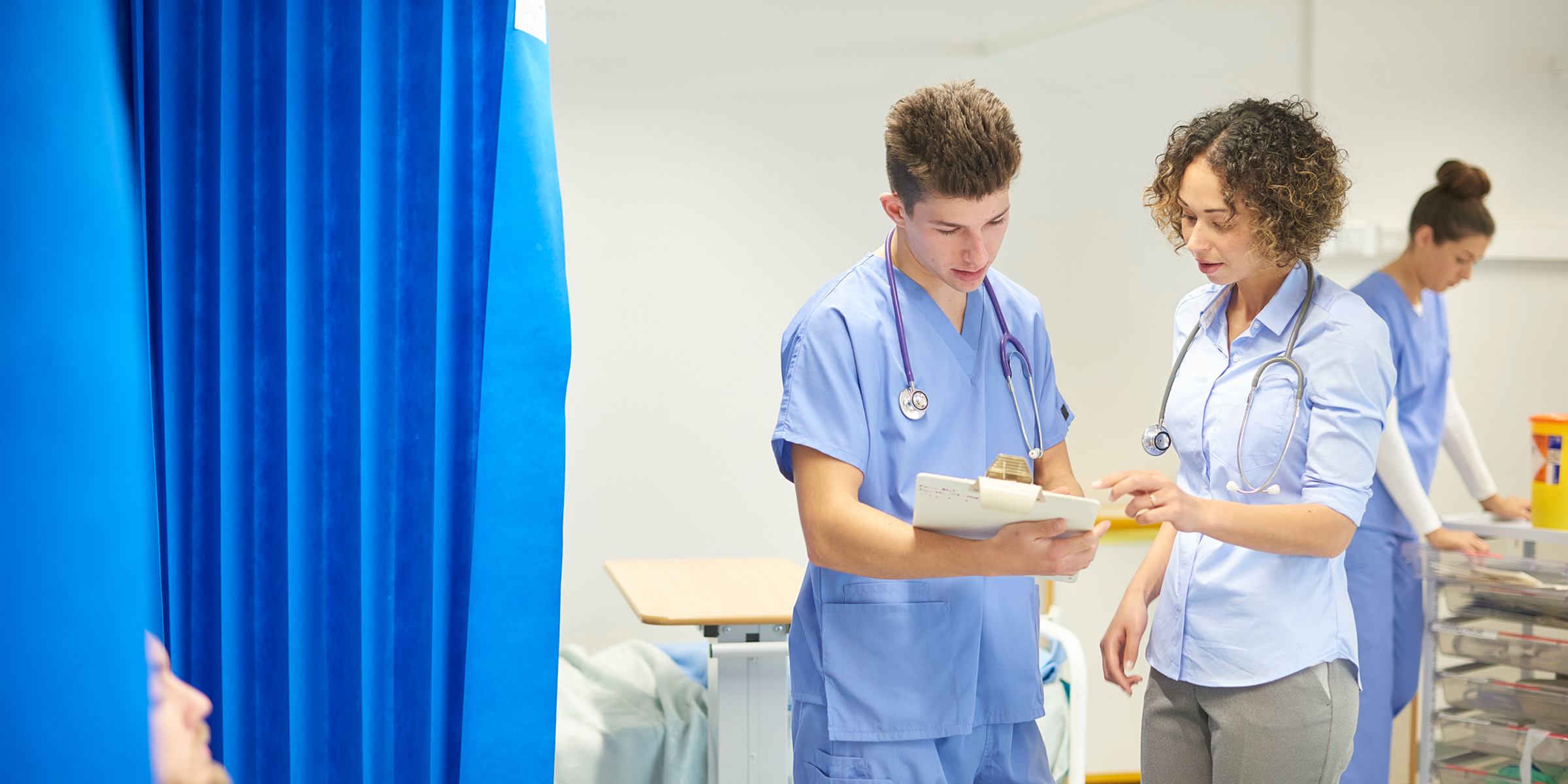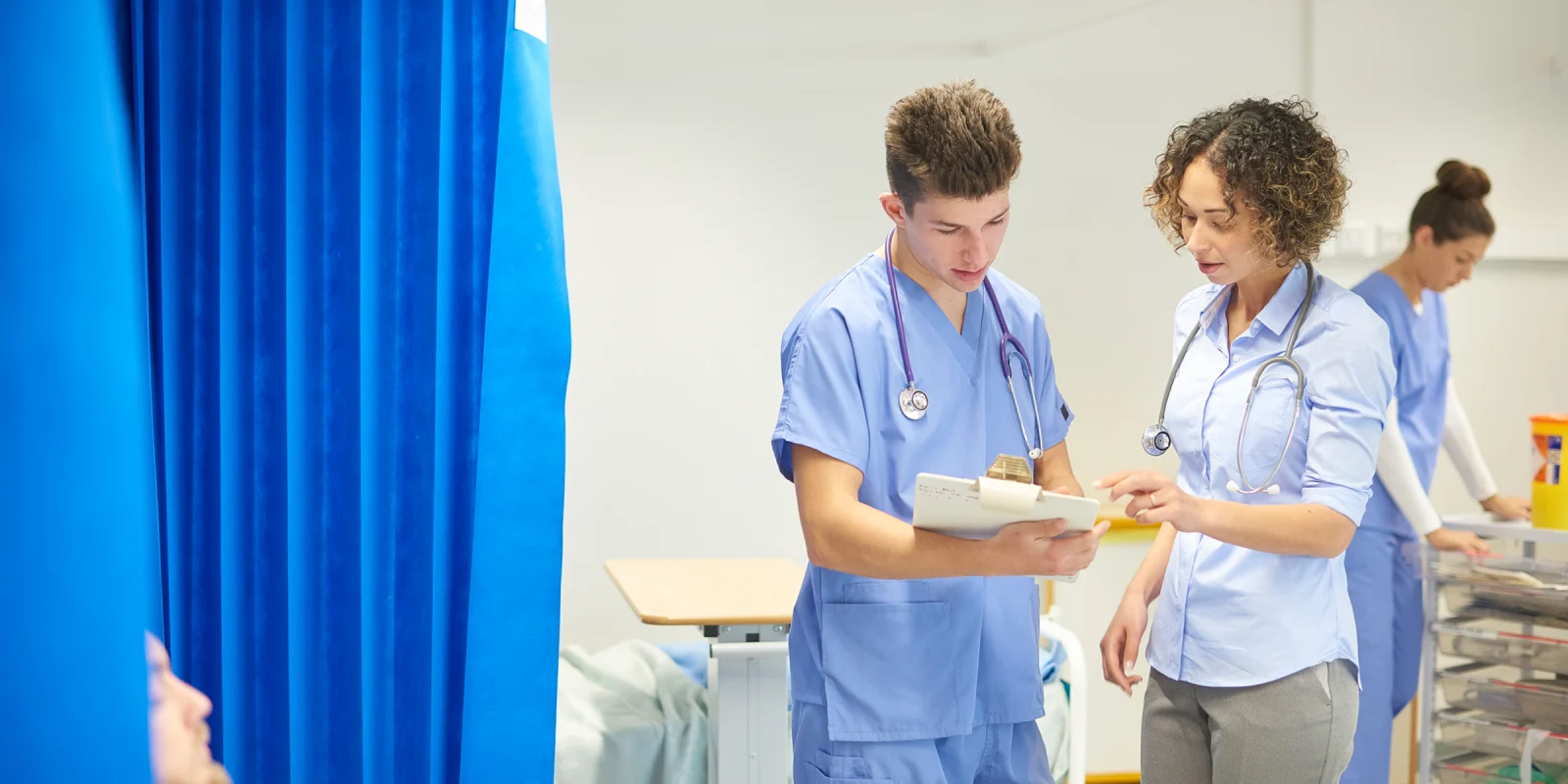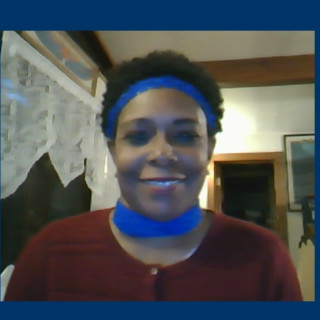
We are living and working in the time of COVID-19. We are living with changes to our personal lives that are now considered the "new normal." The phrase “new normal” is now as normal as getting up in the morning and having a cup of coffee or tea.
As a PA with 27 years behind me, I can only be incredibly grateful to all of the MD and PA colleagues who contributed to my training in the past, and continue to contribute to my learning today. Of course, most memorable is the on-site, hands-on training I experienced in various hospitals and clinics. This kind of training is irreplaceable for students in the various health field programs.
Before COVID-19, if you were to walk onto any teaching hospital unit, chances are you would see students from many domains of the health care world who are hoping to complete and succeed in their respective health care programs. There were times when I would complain silently to myself because I would see students standing around the nursing station counter, seemingly doing nothing. Those were eyebrow-raising moments for me. Where was their instructor? Why didn’t they have a task? I wondered if they were getting the best training we had to offer.
Now my eyebrows are raised for a much different reason. There are no students. They are no longer receiving hands-on training. These days, as I go about my rounds to see my patients on ICUs and medical, surgical, and telemetry units, there are no students anxiously going about trying to complete their assigned patient tasks.
It is easy to pay little attention to students if we are not actively involved in their training at a given moment. But subconsciously, when we see students, we acknowledge and appreciate that they are the future. They must carry the administration of health care to future patients. We — the already licensed, experienced, and paid health care workers — must be the ones to teach them. Due to this pandemic, many hospitals, urgent care centers, doctors' offices, clinics, and programs, have cancelled on-site teaching, thus delaying much needed instruction and graduation for many students.
This pandemic has damaged the very core of health care: training new health care workers. There is fear and apprehension of possible exposure to the virus. There is despondency from seeing so many people die from the virus, and in such a short time. This has paralyzed us and the future of health care. However, we can change this.
During this time, there are added learning benefits for students. They will have front-row seats to a special level of patient care, that those before them have never witnessed. They will witness the unprecedented collaboration and teamwork between medical staff (i.e. infectious disease specialists, pulmonologists, internists, nephrologists, hematologists, and neurologists), nursing staff, respiratory therapists, and engineering and auxiliary personnel. Students will be able to see and experience their role in the fight to save as many lives as possible during this pandemic.
Hospitals, urgent care centers, doctors' offices, and clinics should safely begin to reopen their doors to students. Of course, they will need to have fewer students training per day. However, establishing a program for readmitting students into facilities for training is absolutely doable. These programs should include adequate orientation for infection control, as well as safety policies and procedures. Additionally, hands-on training must be given on the use and application of PPE. Determining how much physical interaction between the student and patient is allowed must be left up to the individual facilities. These decisions must be based on the types of physical examinations and procedures needed, and the patient’s comfort level with that interaction.
Let’s get back to the times when we — the already licensed, experienced, and paid health care workers — would interact regularly with, and train, students. The times we congratulated them on their acceptance into their programs, and their progress thus far. The times we encouraged them with sincerity to study hard and never give up. The times we wished them well in their goals of becoming licensed or certified in their chosen field.
The times when we trained.
Fellow clinicians — let’s do this. Our students and the future of health care depend on it.
Pamela Bassett is a certified PA working in Los Angeles, California. She graduated from the USC School of Medicine PA Program in 1993. Prior to becoming a PA, she worked in nursing for 18 years. Over the past 27 years as a PA, she has worked in internal medicine with a subspecialty in infectious disease. Currently, she works in private practice and is also an adjunct faculty professor at East Los Angeles Community College, instructing in health occupational courses. She is a 2020–2021 Doximity Op-Med Fellow.
Click here to see more perspectives on COVID-19 from the Doximity network.
Click here for up-to-date news about COVID-19 on Doximity.







